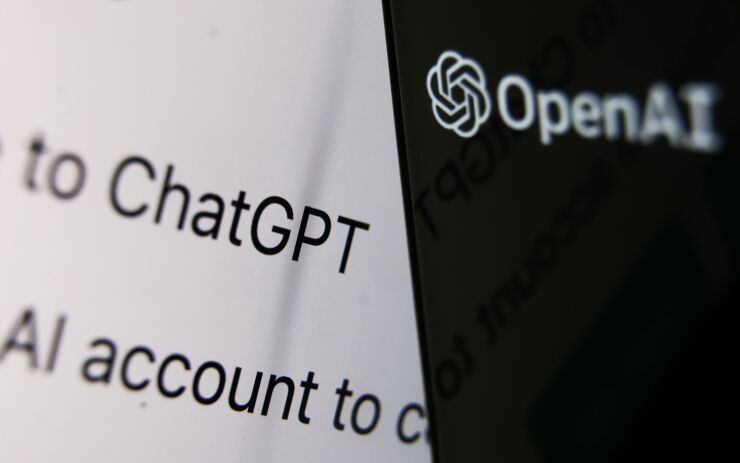The successful launch of OpenAI's
Large Language Models
Certain advanced AI algorithms called Large Language Models (
While differing in accuracy or depth, LLMs like ChatGPT are able to respond to user inquiries on a wide range of subjects. A one-word retort or a multi-page torrent of material may be used as an answer. However, there are certain issues that come with existing LLMs.
With a lack of control or siting of sources and frequently plucking sentences and words out of context, tools like ChatGPT can construct an answer and present it to the user as reality. OpenAI has recognized this problem and warned that users of LLMs who are unable to distinguish between fact and fiction face a serious risk, especially in industries like insurance where specificity and context are crucial for critical business processes such as settlements.
Moreover, LLMs are presently 'trapped' in the era in which they were taught. You would receive nothing or, worse, prices from 2021 if you requested ChatGPT for a summary of the most recent insurance quotes for New York. Due to their size and complexity, today's LLMs are not regularly checking their sources, making it more difficult to access current information, which could restrict some elements of commercial use. There are efforts underway to combat this phenomenon, though today's LLMs struggle to be consistent in a way that would qualify them as 'enterprise grade.'
The need for an insurance LLM
Although LLMs have certain obvious drawbacks and difficulties, there is a lot of room for this technology to be used in the insurance sector in areas like:
- Fraud detection - LLMs can help with fraud prevention and detection. To stop fraud in its tracks and save time and money, insurance companies can deploy ChatGPT models. The technology enables firms to immediately take the necessary action by identifying patterns, spotting anomalies, and flagging questionable conduct.
- Document analysis - When evaluating complex risks like pollution coverage, where site assessment reports are lengthy, intricate, and subtle, LLMs could help underwriters to parse the signal from the noise. In the past, insurance companies have depended on highly qualified (and costly) underwriting expertise to examine these reports for crucial details that are sometimes overlooked when manual review is the only option. A LLM can guarantee that everything is examined, raising the most germane points to the underwriter for consideration.
- Customer service - Substantial improvements in customer experience, shorter wait times, and more accurate information could be made in areas like customer servicing and queries. Using LLMs can also drastically lower operational expenses while boosting productivity and efficiency.
LLMs essentially provide insurance businesses enormous potential to use AI across written documents and data sources, but not in their current state and probably not in their future update - at least not without some assistance.
Maximizing LLMs potential in the insurance industry
Services like ChatGPT provide direct responses without bombarding customers with pointless material or advertisements. This improves the user experience and takes the hassle out of manually searching for, finding, and confirming information.
Technical users can pay a charge to access some of the limited controls behind these LLMs, but it's crucial to note that these controls have limitations as well.
First, fine-tuning is still a task best left to experienced, technical users. Not many businesses have these skills, and even when they do, there are still issues with continuous management and maintenance. Even with the talent and infrastructure to manage it, the model's effectiveness will be severely constrained by the inability to fine-tune using more than one carrier's experience.
A typical insurance business also gathers an enormous amount of sensitive information, such as financial data, medical records, and personal information. The sharing of data between enterprises through third-party solutions like
Bringing an advanced LLM into your own cloud environment needs high computer resources, incurring considerable expenditures just to host the model, in addition to the burden of additional storage for the data it is consuming, which brings us to our final point: to address the data privacy dilemma.
LLMs are a game-changer for the insurance sector and have enormous potential to not just evaluate written materials and information at scale, but also to power the automation of more intricate, unstructured, business processes that focus on natural language.
When it comes to general LLMs, we suggest that executives exercise prudence and adopt a test-and-learn strategy. Take care not to upload or use confidential data or anything that may reflect core IP. Equally, be very clear about the use case and expected outcomes. General LLMs are just that, general, which means that in areas that require specificity, such as how to interpret a demand letter, general LLM's may provide confidently incorrect answers if presented with conflicting data such as multiple dates, or data that relies on something that is current, e.g. a live event (remember, the training data for tools like ChatGPT is not live, it is frozen in the time period it was released).
Finally, we recommend using a 3rd party middleware and trusted partners that enable you to adjust the parameters around these models so that you have better control over inputs and outputs, assuring predictability and repeatability within the context of your company.






